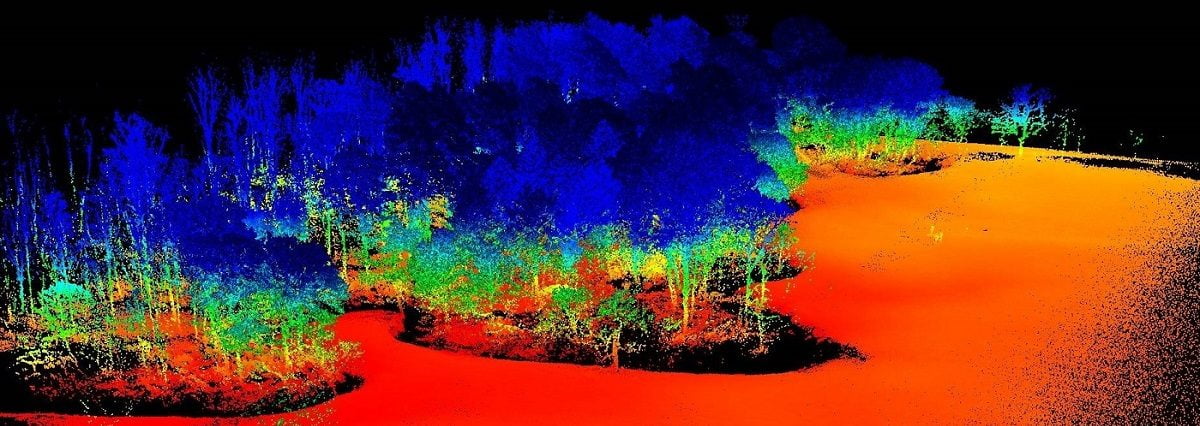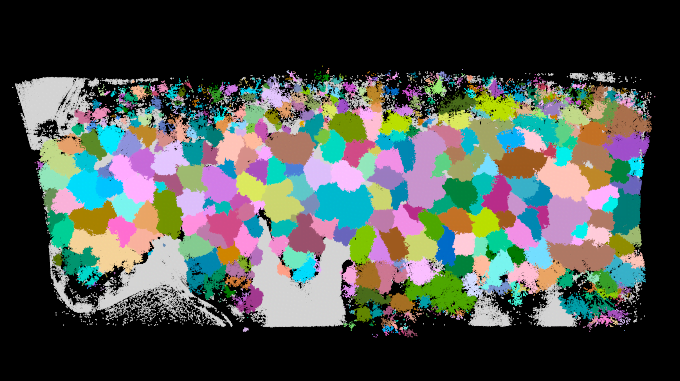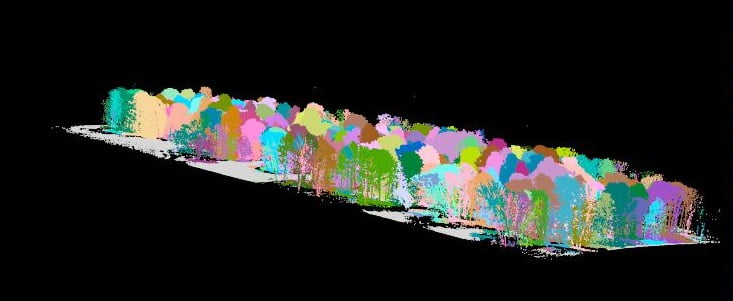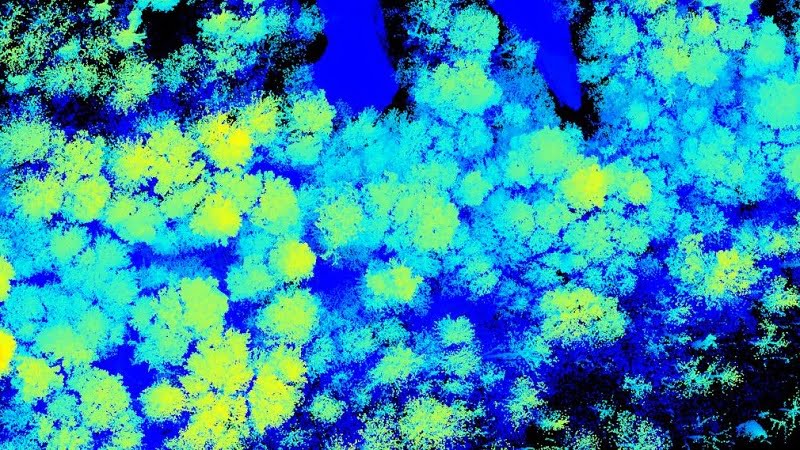Applications of UAV LiDAR forest management
Point cloud data captured using UAV LiDAR continues to demonstrate its value in this forestry case study. The Digital Terrain Model (DTM) created illustrates how this technology can improve operational forestry management. LiDAR data can be used to determine metrics such as tree height and growth rates and to enable tree classification. These metrics can be analyzed to assess forest health and prevent the spread of disease, prepare carbon capture and biomass estimates, ascertain drainage patterns and fuel load estimates for forest fire prevention.
The UAV LiDAR forestry survey
An area of woodland (10.9 acres/ 4.4 hectares) was surveyed near Barnsley in Yorkshire, UK using the Routescene UAV LiDAR System RS4. The Velodyne HDL-32 LiDAR sensor built into this system has a proven record of robustness, offers high accuracy and high resolution. It can operate in dual return mode and provides a scan rate of up to 1.4 million points per second from 32 different lasers with a wide field of view. This means the system excels at penetrating dense vegetation enabling both the ground and individual trees to be mapped to a high level of detail.
For this project a critical metric to be determined was the “Diameter at Breast Height” (DBH) for each tree. This is challenging as it requires as high resolution data as possible to be captured of each tree trunk. To achieve this the drone needs to be flown in tight flight lines and low and slow over the canopy. This demands careful survey and flight planning, factoring in extra flying time, and to accurately determine the safety margin between the drone and the canopy to avoid any collisions with particularly tall trees.
The drone was flown at an average height of 45m and a velocity of 5m/s. This enabled the UAV LiDAR System to collect a total of 8,912,679 points, used to create an incredibly dense 3D georeferenced point cloud. This high point density meant trees could be individually identified, with metrics and information extracted on an individual tree basis. This approach is particularly useful in variable heterogeneous forest environments such as this site.
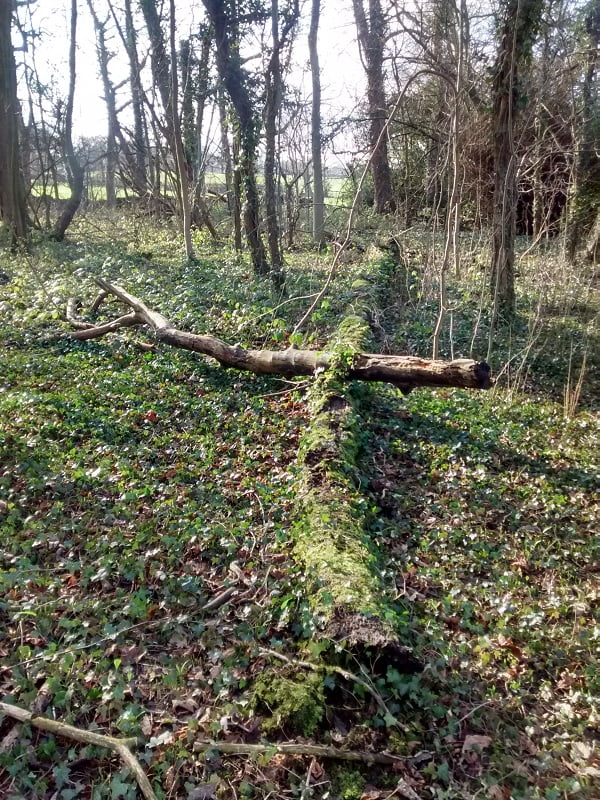
The forest near Barnsley, Yorkshire, UK
Additional processing was undertaken by Dr. Chloe Barnes at 2Excel Geo. The information can be utilized across different scales to provide information to support forest management activities. For example, even though small proportions of a complete forest may be scanned using a UAV LiDAR System, describing the characteristics of these parcels can provide sufficient representative information for the majority. The results can be used to develop management objectives, for instance, growth monitoring and harvesting planning.
Processing the results
Processing for this project was undertaken using Routescene’s proprietary LidarViewer Pro software, designed specifically for large LiDAR survey datasets.
Identifying individual tree crowns
Using a LiDAR point cloud the identification of individual tree crowns can be achieved through many approaches. For highly detailed point clouds, such as this dataset, algorithms to identify individual trees can be applied directly to the LiDAR data. This typically provides a more detailed segmentation as the methodology uses information from the point cloud to locate and identify individual trees. Following segmentation, structural metrics can be derived using all points associated with the tree crown. Using the entire dataset the team identified a total of 321 trees.
Creating a DTM to assess ground characteristics
Using Routescene’s proprietary LidarViewer Pro software a Digital Terrain Model was created using a series of filters to extract the model. A further set of filters was then run, including the Bare Earth Model, based on a cloth simulation. This technique virtually drapes a cloth onto the upturned point cloud, the cloth will sink into the small undulations in the DTM, but will not go as far as filling a void created by a man-made structure such as a building.
The resultant model was then used as a filter in its own right and the whole point cloud was passed through the model. Any point that was within a certain distance of the model was retained, the rest of the points discarded. This method allows for a very high resolution Digital Terrain Model to be created.
DTMs generated from points classified as ground returns can be a useful dataset for forest management. In particular, information about ground characteristics such as slope can inform the planning and execution of timber harvesting and drainage.
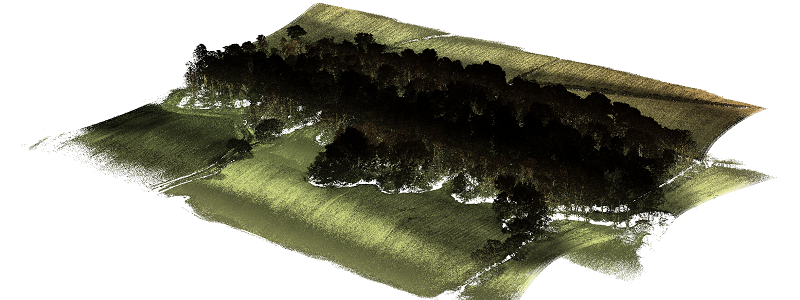
Point cloud of forest
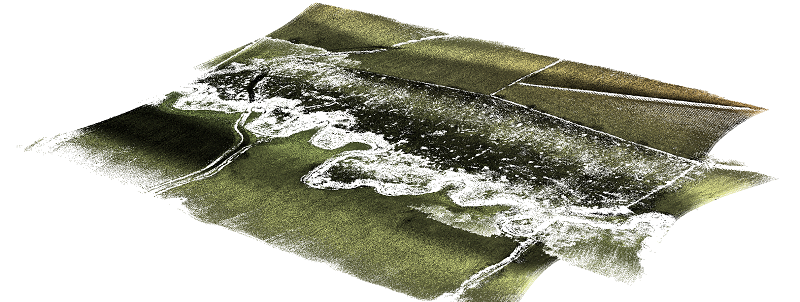
Point cloud with all above ground data including vegetation removed
Height metrics
Standard metrics summarising height can provide a basic overview of the forest structure. This can be calculated for the forest stand or calculated for each individual tree. A forest stand is a contiguous community of trees sufficiently uniform in composition, structure, age, size, class, distribution, quality, or location to distinguish it from adjacent communities. Due to the strong relationship between canopy height and other biophysical parameters, this data can be used to estimate information such as stand volume, biomass, basal area and mean stem diameter.
| Standard Height Metrics | Stand |
|---|---|
| Average height | 12.56m |
| Standard deviation | 4.19 |
| Skew | -0.52 |
| Percentiles | |
| P50 | 13.20m |
| P75 | 15.73m |
| P90 | 17.45m |
| P95 | 18.25m |
Specific uses of UAV LiDAR in forest management
The above metrics and other structural information that can be derived from point clouds can be useful for a variety of forest management tasks including:
Forest fire mitigation
Canopy bulk density (CBD) and canopy base height (CBH) are important parameters for canopy fuel estimation in fire modeling. CBD is used to predict crown fire spread. CBH is the average height from the ground to the underside of the canopy and the lowest height informs if there is a sufficient amount of forest canopy fuel to propagate the fire vertically into the canopy.
Identifying disease
Bicentile metrics representing the percentage of LiDAR returns recorded at different tree height percentiles have been used alongside canopy cover and canopy density metrics to detect canopy defoliation associated with disease.
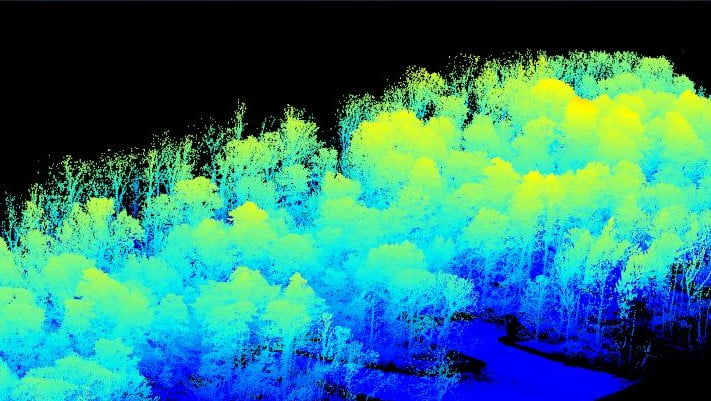
LiDAR point cloud showing the effect of defoliation
Carbon sequestration
LiDAR metrics have been used to derive information pertinent to carbon sequestration which enables the amount of carbon dioxide that is stored in the forest to be quantified. The Woodland Carbon Code (WCC) (www.woodlandcarboncode.org.uk) is the quality assurance standard for woodland creation projects in the UK, and generates independently verified carbon units. The WCC has created a carbon assessment protocol which details how the biomass of existing woodland is to be determined. Some of the steps to undertake the carbon assessment include: deriving a tree stem volume estimate for each species; estimating, for each stand of trees, the allocation of biomass in different parts of the tree; and then finally converting the biomass estimates to their carbon equivalents.
Measuring forest changes over time
Investment in forestry is a long term strategy both for environmental and commercial purposes. The repeated assessment of a forest over time will highlight structural changes for example defoliation, which can be associated with disease, and can be used to identify and limit outbreaks of pests and infection. Such monitoring over time also informs growth rates, the carbon sequestration, the windthrow, deforestation and post-harvesting residue quantification.
Conclusion
The survey produced a DTM to inform future conservation and land management. High resolution LiDAR point clouds provided 3D data for the detailed assessment of forest structure at the individual tree level. This information can be useful for tree mapping, timber volume, biomass volume and pre-harvesting assessments. Repeating the survey will inform structural changes through the seasons and time. LiDAR technology can also be fused with other remotely sensed information such as hyperspectral or thermal imagery which could provide an even more accurate picture of the health of our forests. As LiDAR and other remotely sensed technology continue to develop, more information can be acquired to help prevent forest decay and inform conservation.

Point cloud of woodland (left) and Digital Terrain Model (right)
This case study also appeared in GIS Resources magazine.

